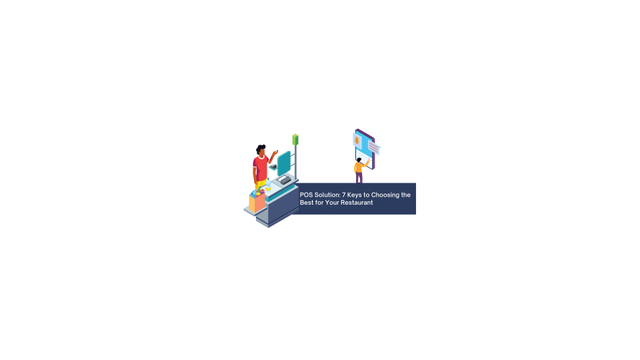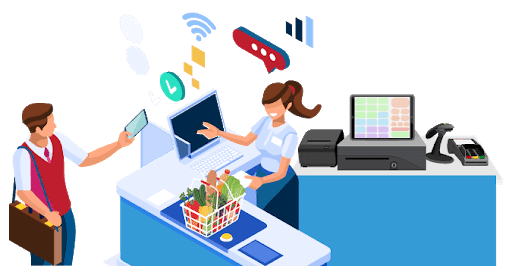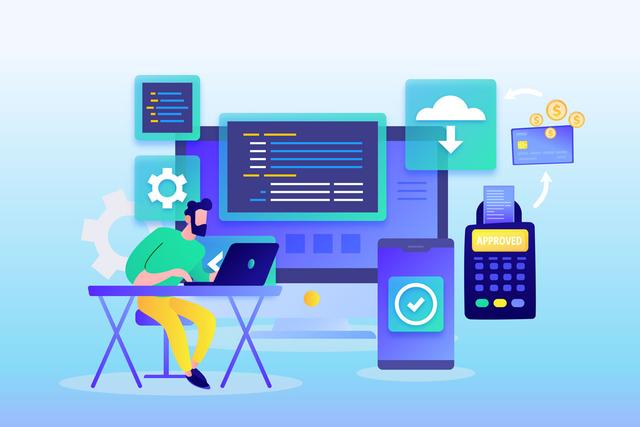POS Solution: 7 Keys to Choosing the Best for Your Restaurant
In an industry as fast-paced, and fast-growing, as the restaurant business, it’s important to find a point of sale (POS) Solution that can keep up. Modern POS software has evolved into a tool streamlining every aspect of the restaurant business, from customer experience to user experience and administrative responsibilities
1. Customer Experience
A good restaurant point-of-sale system should be able to give excellent Customer Service. Sometimes, your restaurant POS may be simple to set up and use. Even then, you need the help and guidance of a seasoned POS expert who will walk you through the process. Retailers and restaurant owners frequently lose money and time as a result of POS failures. As a result, having someone on hand who is knowledgeable and skilled in resolving POS-related difficulties is vital. As a result, when shopping for a restaurant POS system, be sure to look at the customer support and other Customer Services they provide.
2. User Friendly
Your staff uses advanced software in their personal lives (tablets, smartphones, smart televisions, smart watches). Having to come into your restaurant and use poorly-designed, outdated, slow software, can quickly become a significant cause of frustration. A POS solution that is intuitive, easy to learn, and easy to navigate, makes for a better user experience. They’ll also be able to clock in right within the system, making it easy to come into work and hit the ground running, and in the process, improving payroll automation and accuracy.
3. POS Hardware
POS hardware is all the input and output devices that make the point-of-sale software work at the point of purchase place. Pos hardware for retail and restaurant establishments includes everything from a standard computer to an iPad cash register and everything in between. POS hardware is designed to work with specific software. This means you can’t just buy any receipt printer and expect it to function with your POS system. When POS software providers create software, they make it so that it can communicate with specific hardware components and protocols. To get the most out of your retail restaurant POS solution, most software companies provide hardware bundles.
The ongoing costs of a good POS system are very cheap. The initial setup fees could be a little greater than you expect. If the selected restaurant POS system is not compatible with your hardware, you’ll have to pay for barcode scanners, cash drawers, and other hardware in addition to the software. Hence, it is important to do the necessary research before buying your POS system.
4. Real-time Reporting and Analytics
A restaurant POS solution should include reporting capabilities that enable the company to keep track of sales, profits, and other expenses. A restaurant POS system generates reports that provide real-time business data. Owners may access reports when at home or on the road thanks to cutting-edge features like cloud point-of-sale system reporting. No matter where the owners are, they’ll have the information and details they need to make better business decisions. Management can also collect customer purchase data, develop forecast models, and provide thorough reports using restaurant point-of-sale systems.
A restaurant POS software lets you access the customized sales reports and other data of all the outlets. You can view the real-time reports anytime from any internet-enabled device. Menu management reports, table management details, daily, weekly, and monthly sales revenue reports, inventory reports, etc can be viewed on a real-time basis.

5. Multi-Location Capability
Some restaurant POS systems allow you to manage several outlets using the same software. Some restaurant point-of-sale systems limit the number of outlets, limiting your business’s growth. It’s simple to monitor data and improve inventory for each location with a restaurant pos system that supports many locations. You may personalize each outlet in different locations according to their needs using this multi-location feature.
6. Inventory
It’s no surprise – restaurants have to work with very thin margins. Look for a POS system that makes your inventory management simple. You should be able to easily track your ingredients and products and keep an eye on where all of it goes.
7. Speed
At the end of the day, no matter what kind of restaurant you’re operating, speed of service is of utmost importance. You only have so much time to maximize your opportunity to earn revenue. That means moving through each step of the dining process as quickly as possible, while also offering a seamless experience for customers, wait staff, bar staff, cooks, and managers. The last thing you want is a POS system slowing that process down.
For Latest News & Update
Want Receive the Best SAAS Insights? Subscribe Now!
We can help you to create your dream website for better business revenue.
Build your online store with us
You just pay 9/- per order placed
Supercharge your online business with an arsenal of tools that fuel exponential growth.


